#N.Y. State of Mind Tour
Text










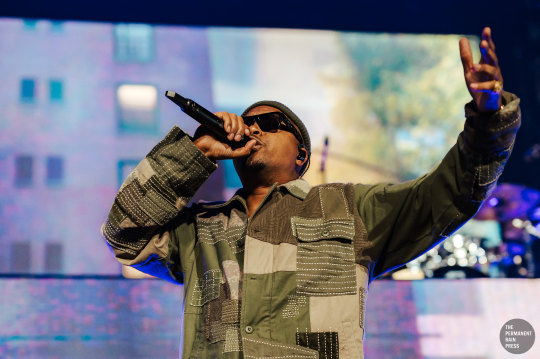

Gallery: Nas @ Rogers Arena - Vancouver, BC
Date: October 16, 2023
Photographed by: Timothy Nguyen
#Nasir Jones#Nas#Timothy#Timothy Nguyen#PRmusic#PRphoto#Vancouver#yvr#Rogers Arena#Live Nation#N.Y. State of Mind Tour#NY State of Mind Tour#Magic 3#King's Disease#Hip Hop is Dead#Life Is Good#God's Son#Street's Disciple#Stillmatic#It Was Written#Illmatic#Nastradamus#If I Ruled the World#The World is Yours#Mass Appeal#Made You Look#concert#concert photography#concert photos#gig
6 notes
·
View notes
Text

0 notes
Text



Wu-Tang Clan/Nas/Busta Rhymes at Ruoff Music Center in Noblesville, IN on 9/1/22, N.Y. State of Mind tour.
4 notes
·
View notes
Text

Post: Wu-Tang and Nas N.Y. State of Mind Tour concert to be livestreamed on Prime Video https://www.blaqsbi.com/5sxo
0 notes
Text
Wu-Tang Clan & Nas ‘N.Y. State of Mind Tour’ Date w/ De La Soul to be Livestreamed on Amazon Music
Wu-Tang Clan & Nas ‘N.Y. State of Mind Tour’ Date w/ De La Soul to be Livestreamed on Amazon Music
0 notes
Text
Bob Dylan Has a Lot on His Mind
In a rare interview, the Nobel Prize winner discusses mortality, drawing inspiration from the past, and his new album, “Rough and Rowdy Ways.”
Give this article
1005
https://web.archive.org/web/20230330042035im_/https://static01.nyt.com/images/2020/06/14/arts/14dylan1/merlin_146478750_0a7f707b-ed5c-4046-a922-d33d68db402d-superJumbo.jpg?quality=75&auto=webp
By Douglas Brinkley
Published June 12, 2020Updated Sept. 18, 2020
Leer en español
A few years ago, sitting beneath shade trees in Saratoga Springs, N.Y., I had a two-hour discussion with Bob Dylan that touched on Malcolm X, the French Revolution, Franklin Roosevelt and World War II. At one juncture, he asked me what I knew about the Sand Creek Massacre of 1864. When I answered, “Not enough,” he got up from his folding chair, climbed into his tour bus, and came back five minutes later with photocopies describing how U.S. troops had butchered hundreds of peaceful Cheyenne and Arapahoe in southeastern Colorado.
Given the nature of our relationship, I felt comfortable reaching out to him in April after, in the midst of the coronavirus crisis, he unexpectedly released his epic, 17-minute song “Murder Most Foul,” about the Kennedy assassination. Even though he hadn’t done a major interview outside of his own website since winning the Nobel Prize in Literature in 2016, he agreed to a phone chat from his Malibu home, which turned out to be his only interview before next Friday’s release of “Rough and Rowdy Ways,” his first album of original songs since “Tempest” in 2012.
Like most conversations with Dylan, “Rough and Rowdy Ways” covers complex territory: trances and hymns, defiant blues, love longings, comic juxtapositions, prankster wordplay, patriotic ardor, maverick steadfastness, lyrical Cubism, twilight-age reflections and spiritual contentment.
In the high-octane showstopper “Goodbye Jimmy Reed,” Dylan honors the Mississippi bluesman with dragon-fierce harmonica riffs and bawdy lyrics. In the slow blues “Crossing the Rubicon,” he feels “the bones beneath my skin” and considers his options before death: “Three miles north of purgatory — one step from the great beyond/I prayed to the cross and I kissed the girls and I crossed the Rubicon.”
“Mother of Muses” is a hymn to the natural world, gospel choirs and military men like William Tecumseh Sherman and George Patton, “who cleared the path for Presley to sing/who cleared the path for Martin Luther King.” And “Key West (Philosopher’s Pirate),” is an ethereal meditation on immortality set on a drive down Route 1 to the Florida Keys, with Donnie Herron’s accordion channeling the Band’s Garth Hudson. In it he pays homage to, “Ginsberg, Corso and Kerouac.”
ImageDylan says he doesn’t think about mortality in a personal sense: “I think about the death of the human race.”Credit...William C. Eckenberg/The New York Times
Perhaps someday he’ll write a song or paint a picture to honor George Floyd. In the 1960s and 1970s, following the work of black leaders of the civil rights movement, Dylan also worked to expose the arrogance of white privilege and the viciousness of racial hatred in America through songs like “George Jackson,” “Only a Pawn in Their Game,” and “The Lonesome Death of Hattie Carroll.” One of his most fierce lines about policing and race came in his 1976 ballad “Hurricane”: “In Paterson that’s just the way things go/If you’re black you might as well not show up on the street/Unless you want to draw the heat.”
I had a brief follow-up with Dylan, 79, one day after Floyd was killed in Minneapolis. Clearly shaken by the horror that had occurred in his home state, he sounded depressed. “It sickened me no end to see George tortured to death like that,” he said. “It was beyond ugly. Let’s hope that justice comes swift for the Floyd family and for the nation.”
These are edited excerpts from the two conversations.
Was “Murder Most Foul” written as a nostalgic eulogy for a long-lost time?
To me it’s not nostalgic. I don’t think of “Murder Most Foul” as a glorification of the past or some kind of send-off to a lost age. It speaks to me in the moment. It always did, especially when I was writing the lyrics out.
Somebody auctioned off a sheaf of unpublished transcripts in the 1990s that you wrote about J.F.K.’s murder. Were those prose notes for an essay or were you hoping to write a song like “Murder Most Foul” for a long time?
I’m not aware of ever wanting to write a song about J.F.K. A lot of those auctioned-off documents have been forged. The forgeries are easy to spot because somebody always signs my name on the bottom.
Were you surprised that this 17-minute-long song was your first No. 1 Billboard hit?
I was, yeah.
“I Contain Multitudes” has a powerful line: “I sleep with life and death in the same bed.” I suppose we all feel that way when we hit a certain age. Do you think about mortality often?
I think about the death of the human race. The long strange trip of the naked ape. Not to be light on it, but everybody’s life is so transient. Every human being, no matter how strong or mighty, is frail when it comes to death. I think about it in general terms, not in a personal way.
There is a lot of apocalyptic sentiment in “Murder Most Foul.” Are you worried that in 2020 we’re past the point of no return? That technology and hyper-industrialization are going to work against human life on Earth?
Sure, there’s a lot of reasons to be apprehensive about that. There’s definitely a lot more anxiety and nervousness around now than there used to be. But that only applies to people of a certain age like me and you, Doug. We have a tendency to live in the past, but that’s only us. Youngsters don’t have that tendency. They have no past, so all they know is what they see and hear, and they’ll believe anything. In 20 or 30 years from now, they’ll be at the forefront. When you see somebody that is 10 years old, he’s going to be in control in 20 or 30 years, and he won’t have a clue about the world we knew. Young people who are in their teens now have no memory lane to remember. So it’s probably best to get into that mind-set as soon as we can, because that’s going to be the reality.
As far as technology goes, it makes everybody vulnerable. But young people don’t think like that. They could care less. Telecommunications and advanced technology is the world they were born into. Our world is already obsolete.
A line in “False Prophet” — “I’m the last of the best — you can bury the rest” — reminded me of the recent deaths of John Prine and Little Richard. Did you listen to their music after they passed as a kind of tribute?
Both of those guys were triumphant in their work. They don’t need anybody doing tributes. Everybody knows what they did and who they were. And they deserve all the respect and acclaim that they received. No doubt about it. But Little Richard I grew up with. And he was there before me. Lit a match under me. Tuned me into things I never would have known on my own. So I think of him differently. John came after me. So it’s not the same thing. I acknowledge them differently.
ImageFrom left, George Harrison, Dylan, Little Richard and Mike Love at the 1988 Rock & Roll Hall of Fame induction ceremony.Credit...Ebet Roberts/Redferns, via Getty Images
Why didn’t more people pay attention to Little Richard’s gospel music?
Probably because gospel music is the music of good news and in these days there just isn’t any. Good news in today’s world is like a fugitive, treated like a hoodlum and put on the run. Castigated. All we see is good-for-nothing news. And we have to thank the media industry for that. It stirs people up. Gossip and dirty laundry. Dark news that depresses and horrifies you.
On the other hand, gospel news is exemplary. It can give you courage. You can pace your life accordingly, or try to, anyway. And you can do it with honor and principles. There are theories of truth in gospel but to most people it’s unimportant. Their lives are lived out too fast. Too many bad influences. Sex and politics and murder is the way to go if you want to get people’s attention. It excites us, that’s our problem.
Little Richard was a great gospel singer. But I think he was looked at as an outsider or an interloper in the gospel world. They didn’t accept him there. And of course the rock ’n’ roll world wanted to keep him singing “Good Golly, Miss Molly.” So his gospel music wasn’t accepted in either world. I think the same thing happened to Sister Rosetta Tharpe. I can’t imagine either of them being bothered too much about it. Both are what we used to call people of high character. Genuine, plenty talented and who knew themselves, weren’t swayed by anything from the outside. Little Richard, I know was like that.
But so was Robert Johnson, even more so. Robert was one of the most inventive geniuses of all time. But he probably had no audience to speak of. He was so far ahead of his time that we still haven’t caught up with him. His status today couldn’t be any higher. Yet in his day, his songs must have confused people. It just goes to show you that great people follow their own path.
On the album “Tempest” you perform “Roll on John” as a tribute to John Lennon. Is there another person you’d like to write a ballad for?
Those kinds of songs for me just come out of the blue, out of thin air. I never plan to write any of them. But in saying that, there are certain public figures that are just in your subconscious for one reason or another. None of those songs with designated names are intentionally written. They just fall down from space. I’m just as bewildered as anybody else as to why I write them. The folk tradition has a long history of songs about people, though. John Henry, Mr. Garfield, Roosevelt. I guess I’m just locked into that tradition.
You honor many great recording artists in your songs. Your mention of Don Henley and Glenn Frey on “Murder Most Foul” came off as a bit of a surprise to me. What Eagles songs do you enjoy the most?
“New Kid in Town,” “Life in the Fast Lane,” “Pretty Maids All in a Row.” That could be one of the best songs ever.
ImageDylan received the Presidential Medal of Freedom from Barack Obama in 2012.Credit...Luke Sharrett for The New York Times
You also refer to Art Pepper, Charlie Parker, Bud Powell, Thelonious Monk, Oscar Peterson and Stan Getz in “Murder Most Foul.” How has jazz inspired you as a songwriter and poet over your long career? Are there jazz artists you’ve been listening to lately?
Maybe Miles’s early stuff on Capitol Records. But what’s jazz? Dixieland, bebop, high-speed fusion? What do you call jazz? Is it Sonny Rollins? I like Sonny’s calypso stuff but is that jazz? Jo Stafford, Joni James, Kay Starr — I think they were all jazz singers. King Pleasure, that’s my idea of a jazz singer. I don’t know, you can put anything into that category. Jazz goes back to the Roaring Twenties. Paul Whiteman was called the king of jazz. I’m sure if you asked Lester Young he wouldn’t know what you’re talking about.
Has any of it ever inspired me? Well yeah. Probably a lot. Ella Fitzgerald as a singer inspires me. Oscar Peterson as a piano player, absolutely. Has any of it inspired me as a songwriter? Yeah, “Ruby, My Dear” by Monk. That song set me off in some direction to do something along those lines. I remember listening to that over and over.
What role does improvisation play in your music?
None at all. There’s no way you can change the nature of a song once you’ve invented it. You can set different guitar or piano patterns upon the structural lines and go from there, but that’s not improvisation. Improvisation leaves you open to good or bad performances and the idea is to stay consistent. You basically play the same thing time after time in the most perfect way you can.
“I Contain Multitudes” is surprisingly autobiographical in parts. The last two verses exude a take-no-prisoners stoicism while the rest of the song is a humorous confessional. Did you have fun grappling with contradictory impulses of yourself and human nature in general?
I didn’t really have to grapple much. It’s the kind of thing where you pile up stream-of-consciousness verses and then leave it alone and come pull things out. In that particular song, the last few verses came first. So that’s where the song was going all along. Obviously, the catalyst for the song is the title line. It’s one of those where you write it on instinct. Kind of in a trance state. Most of my recent songs are like that. The lyrics are the real thing, tangible, they’re not metaphors. The songs seem to know themselves and they know that I can sing them, vocally and rhythmically. They kind of write themselves and count on me to sing them.
Once again in this song you name a lot of people. What made you decide to mention Anne Frank next to Indiana Jones?
Her story means a lot. It’s profound. And hard to articulate or paraphrase, especially in modern culture. Everybody’s got such a short attention span. But you’re taking Anne’s name out of context, she’s part of a trilogy. You could just as well ask, “What made you decide to include Indiana Jones or the Rolling Stones?” The names themselves are not solitary. It’s the combination of them that adds up to something more than their singular parts. To go too much into detail is irrelevant. The song is like a painting, you can’t see it all at once if you’re standing too close. The individual pieces are just part of a whole.
“I Contain Multitudes” is more like trance writing. Well, it’s not more like trance writing, it is trance writing. It’s the way I actually feel about things. It is my identity and I’m not going to question it, I am in no position to. Every line has a particular purpose. Somewhere in the universe those three names must have paid a price for what they represent and they’re locked together. And I can hardly explain that. Why or where or how, but those are the facts.
But Indiana Jones was a fictional character?
Yeah, but the John Williams score brought him to life. Without that music it wouldn’t have been much of a movie. It’s the music which makes Indy come alive. So that maybe is one of the reasons he is in the song. I don’t know, all three names came at once.
A reference to the Rolling Stones makes it into “I Contain Multitudes.” Just as a lark, which Stones songs do you wish you could’ve written?
Oh, I don’t know, maybe “Angie,” “Ventilator Blues” and what else, let me see. Oh yeah, “Wild Horses.”
ImageDylan and a host of folk-music icons at the Newport Folk Festival in 1963.Credit...Rowland Scherman/Getty Images
Charlie Sexton began playing with you for a few years in 1999, and returned to the fold in 2009. What makes him such a special player? It’s as if you can read each other’s minds.
As far as Charlie goes, he can read anybody’s mind. Charlie, though, creates songs and sings them as well, and he can play guitar to beat the band. There aren’t any of my songs that Charlie doesn’t feel part of and he’s always played great with me. “False Prophet” is only one of three 12-bar structural things on this record. Charlie is good on all the songs. He’s not a show-off guitar player, although he can do that if he wants. He’s very restrained in his playing but can be explosive when he wants to be. It’s a classic style of playing. Very old school. He inhabits a song rather than attacking it. He’s always done that with me.
How have you spent the last couple of months home-sheltered in Malibu? Have you been able to weld or paint?
Yeah, a little bit.
Are you able to be musically creative while at home? Do you play piano and tool around in your private studio?
I do that mostly in hotel rooms. A hotel room is the closest I get to a private studio.
Does having the Pacific Ocean in your backyard help you process the Covid-19 pandemic in a spiritual way? There is a theory called “blue mind” which believes that living near water is a health curative.
Yeah, I can believe that. “Cool Water,” “Many Rivers to Cross,” “How Deep Is the Ocean.” I hear any of those songs and it’s like some kind of cure. I don’t know what for, but a cure for something that I don’t even know I have. A fix of some kind. It’s like a spiritual thing. Water is a spiritual thing. I never heard of “blue mind” before. Sounds like it could be some kind of slow blues song. Something Van Morrison would write. Maybe he has, I don’t know.
It’s too bad that just when the play “Girl From the North Country,” which features your music, was getting rave reviews, production had to shutter because of Covid-19. Have you seen the play or watched the video of it?
Sure, I’ve seen it and it affected me. I saw it as an anonymous spectator, not as someone who had anything to do with it. I just let it happen. The play had me crying at the end. I can’t even say why. When the curtain came down, I was stunned. I really was. Too bad Broadway shut down because I wanted to see it again.
Do you think of this pandemic in almost biblical terms? A plague that has swept the land?
I think it’s a forerunner of something else to come. It’s an invasion for sure, and it’s widespread, but biblical? You mean like some kind of warning sign for people to repent of their wrongdoings? That would imply that the world is in line for some sort of divine punishment. Extreme arrogance can have some disastrous penalties. Maybe we are on the eve of destruction. There are numerous ways you can think about this virus. I think you just have to let it run its course.
Out of all your compositions, “When I Paint My Masterpiece” has grown on me over the years. What made you bring it back to the forefront of recent concerts?
It’s grown on me as well. I think this song has something to do with the classical world, something that’s out of reach. Someplace you’d like to be beyond your experience. Something that is so supreme and first rate that you could never come back down from the mountain. That you’ve achieved the unthinkable. That’s what the song tries to say, and you’d have to put it in that context. In saying that though, even if you do paint your masterpiece, what will you do then? Well, obviously you have to paint another masterpiece. So it could become some kind of never ending cycle, a trap of some kind. The song doesn’t say that though.
A few years ago I saw you play a bluegrass-sounding version of “Summer Days.” Have you ever thought about recording a bluegrass album?
I’ve never thought about that. Bluegrass music is mysterious and deep rooted and you almost have to be born playing it. Just because you are a great singer, or a great this or that doesn’t mean you can be in a bluegrass band. It’s almost like classical music. It’s harmonic and meditative, but it’s out for blood. If you ever heard the Osborne Brothers, then you know what I mean. It’s an unforgiving music and you can only stretch it so far. Beatles songs played in a bluegrass style don’t make any sense. It’s the wrong repertoire, and that’s been done. There are elements of bluegrass music for sure in what I play, especially the intensity and similar themes. But I don’t have the high tenor voice and we don’t have three-part harmony or consistent banjo. I listen to Bill Monroe a lot, but I more or less stick to what I can do best.
How is your health holding up? You seem to be fit as a fiddle. How do you keep mind and body working together in unison?
Oh, that’s the big question, isn’t it? How does anybody do it? Your mind and body go hand in hand. There has to be some kind of agreement. I like to think of the mind as spirit and the body as substance. How you integrate those two things, I have no idea. I just try to go on a straight line and stay on it, stay on the level.
Douglas Brinkley is the Katherine Tsanoff Brown Chair in Humanities and professor of history at Rice University. He is the author of “American Moonshot: John F. Kennedy and the Great Space Race.”
https://web.archive.org/web/20230330042035/https://www.nytimes.com/2020/06/12/arts/music/bob-dylan-rough-and-rowdy-ways.html
Sent from my iPhone
0 notes
Text
De La Soul Added To Nas & Wu-Tang Clan’s N.Y. State Of Mind Tour
De La Soul Added To Nas & Wu-Tang Clan’s N.Y. State Of Mind Tour
0 notes
Text
Wu-Tang Clan and Nas To Hit Six Canadian Stops On N.Y. State of Mind Tour
Wu-Tang Clan and Nas To Hit Six Canadian Stops On N.Y. State of Mind Tour
0 notes
Text
Wu-Tang Clan & Nas Announce 2023 Australian Dates - Spotlight Report - best news
Today, Hip Hop icons Wu-Tang Clan and Nas have announced Australian dates on their upcoming, legendary co-headlined NY State of Mind tour, which will be hitting multiple continents this year.
The 2023 tour comes on the heels of the sold out 2022 N.Y. State of Mind Tour run that hit 25+ cities last year, including an iconic show at the Hollywood Bowl in Los Angeles. The tour was also recently…

View On WordPress
0 notes
Text

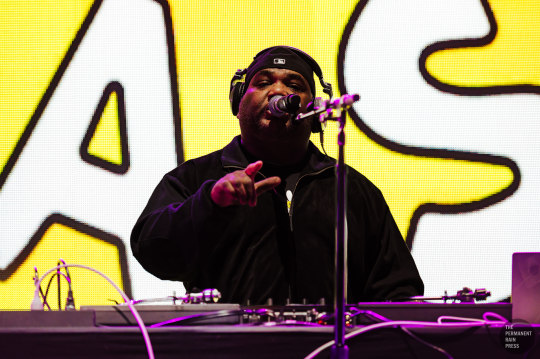

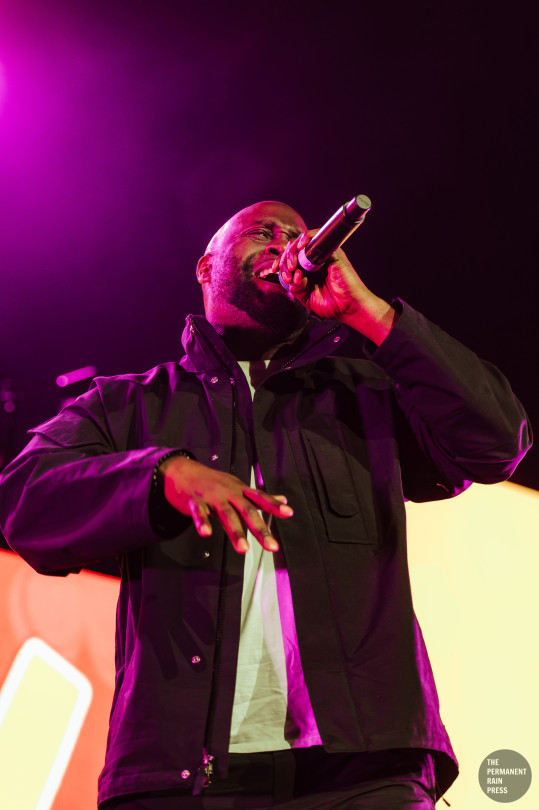
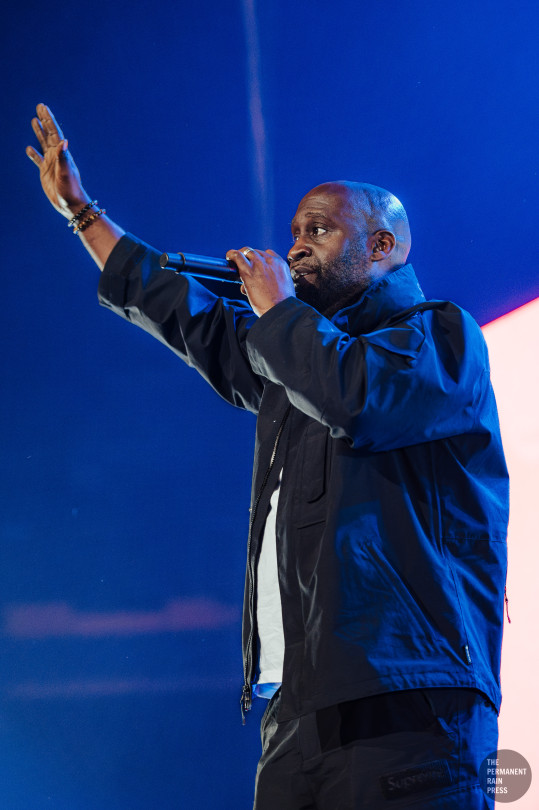







Gallery: De La Soul @ Rogers Arena - Vancouver, BC
Date: October 16, 2023
Photographed by: Timothy Nguyen
#De La Soul#Timothy#Timothy Nguyen#PRmusic#PRphoto#Rogers Arena#Vancouver#Music#live music#Live Nation#N.Y. State of Mind Tour#NY State of Mind Tour#Posdnuos#Maseo#Kelvin Mercer#Vincent Lamont Mason Jr.#Feel Good Inc.#3 Feet High and Rising#AOI Records#And the Anonymous Nobody#Buhloone Mindstate#Stakes is High#The Magic Number#concert#concert photography#concert photos#gig#concerts
0 notes
Text
Nas and Wu-Tang Clan Are Taking That ‘N.Y. State of Mind’ Around the World
[Ebony Nightclub] Rolling Stone Music News: The hip-hop heroes are bringing back their co-headlining tour for another year, with a North American trek scheduled for the fall http://dlvr.it/Sk58Bd
0 notes
Link
Check out this listing I just added to my Poshmark closet: GAS Wu-Tang Clan N.Y. State of Mind 2022 Tour Raleigh NC Poster Trading Card.
0 notes
Photo
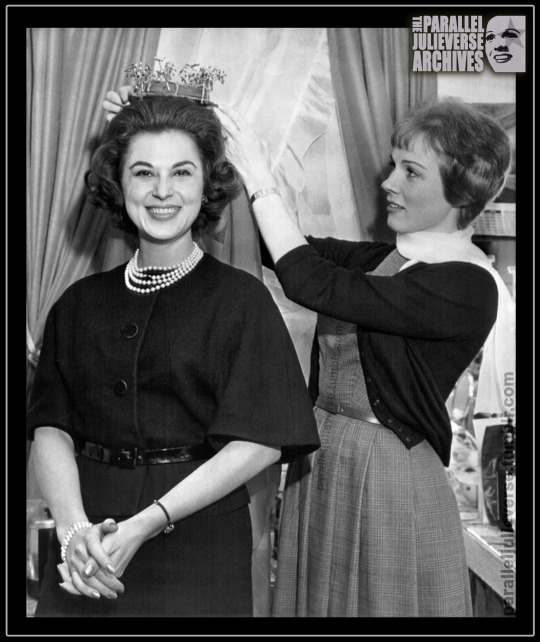

From the PJV Archives: A Star and her Standby
Original caption: Julie Andrews places crown she wears starring in Broadway play ‘Camelot’ on head of her standby, Helena Scott, in New York. Helena, in addition to being Julie’s standby, is the star of her own off-Broadway musical, ‘The Banker’s Daughter’. This unusual arrangement is possible because a standby, unlike an understudy, does not have to be present during a performance. A standby calls in before a performance to make sure the star will go on and after that her time is her own. Helena has an understudy should she have to substitute for Julie. (AP Wirephoto) February 1962
Born Helen Mary Schurgot in Atlantic City in 1928, Scott was a classically trained soprano who studied voice at Juilliard (‘Seashore soprano’, 3). She enjoyed early success as a company soprano with the New York City Opera where she played Musette in Puccini’s La Boheme, Natalie in Lehar’s The Merry Widow and Rose in Weill’s Street Scene (Gaghan, 31). In 1957, Scott sang the role of Natasha in the US premiere production of Prokofieff’s War and Peace which was telecast as a special event on NBC (Durgin, 17). In between operas, Scott performed in several long-running Broadway shows, starting in the chorus before graduating to bigger parts. She was one of the female ensigns helping Mary Martin wash that man outta her hair in South Pacific (1949), a royal consort and, in later performances, Tuptim in The King and I (1951), and a singing principal in the ill-fated Me and Juliet (1953), (Wallace, A-20). Allegedly, it was when she was cast in the latter show that Richard Rodgers suggested she change her stage name from Schurgot to Scott because he had trouble spelling it (Gaghan, 31). Scott’s biggest break came when she was cast to play the lead female role of Rosabella in the UK premiere production of Loesser’s Most Happy Fella in 1960 (Walrath, 29).*
After the London run of Fella, Scott returned to the US but her career didn’t sustain its early impetus. She appeared in a number of regional productions before coming on board in mid-1961 as Julie’s standby in Camelot, a position that had previously been filled by Inga Swenson (Wahls, C23). Scott continued to pursue other work: a music fair ‘tent’ production of The Merry Widow (Gaghan, 31), and the title role in The Banker’s Daughter, the off-Broadway musical mentioned in the caption above, where she received decent notices but the show closed in a matter of weeks (Davis, 37). After Camelot, a few further regional productions ensued: a summer stock tour of The Music Man (1962) opposite Van Johnson (Dear 5-D), and an upstate New York staging of Most Happy Fella (1962) (Walrath, 29).
Thereafter, the public record for Scott grows opaque. During the London run of Most Happy Fella, she met and subsequently become engaged to British publishing director, Christopher Lezard (‘Helena is..’ 15). A brief mention in a Broadway gossip column from late-1962, confirms the pair were married and Scott was moving permanently to London (Winchell, 15). She then seems to have retired from performing, devoting her energies to family life and raising her children, one of whom is British columnist and literary critic, Nicholas Lezard (Lezard 2013).
In terms of her Broadway career, Scott is one of those fascinating figures who hovers in the tenebrous margins of musical theatre history. She never broke through to major stardom and, today, her name would likely draw blanks from even the most ardent Broadway enthusiast. However, she -- along with thousands of others -- formed part of the mostly unsung army of supporting talent that helped shape and give vital form to the ‘golden age’ of the American musical. And Scott did at least leave a documentary legacy of some of her work in the form of recordings for several shows including the musical extravaganza Arabian Nights (1954), the Grieg-inspired operetta Song of Norway (1958), and the original London cast recording of Most Happy Fella (1960). These historical recordings reveal a soprano voice of demonstrable skill and training that was well suited to operetta-style musicals but that would have struggled in the face of the rapidly changing musical idioms of the 1960s.
And, so, to the $64,000 question: did Scott ever actually get to wear that crown on stage during the run of Camelot? While Julie never missed a scheduled performance during her 18-month tenure with Camelot, she did take a planned two-week holiday from the show from 26 October to 9 November 1961, followed by a further one-week break in early-March 1962 to rehearse and tape her TV special, Julie and Carol at Carnegie Hall. And, during those two periods, Scott assumed the role of Guenevere opposite William Squire who had inherited the lead role of King Arthur following Richard Burton’s departure in September 1961 (’Guenevere’ 24). As far as can be ascertained, there weren’t any official reviews of Scott’s brief run in Camelot, though a round-up of Broadway shows by columnist Bruce Galphin (1961) mentioned in passing that “Julie Andrews is gone [from Camelot] and Helena Scott just doesn’t fill the vacuum”. Mind, he also opined that William Squire was “[d]itto..in Burton’s old shoes” (8-A). The principal cast was an impossibly hard act to follow for anyone.
Either way, when time came for Julie to leave Camelot permanently in April 1962 due to pregnancy, Scott doesn’t seem to have been considered as a replacement. The role of Guenevere was initially taken over by Patricia Bredlin, an unknown singer from Wales who was brought over by the producers but who only remained with the show for three months before returning to the UK, reportedly due to homesickness (Gaver, B-2). Bredlin’s understudy, Janet Pavek, assumed the crown for several months (‘Successor’, 39), before Hollywood star, Kathryn Grayson, came onboard as the fourth and final Guenevere, closing the Broadway run before kicking off what would be a very lucrative national tour for the show in early-1963 (‘New Heroine’ 23; ‘“Camelot” Leaving...’, 1E).
Footnote:
* An extra tidbit of trivia, Julie was in the audience for the West End opening night of Most Happy Fella because her-then husband, Tony Walton, designed the scenery and costumes for the London production. Newspaper reports relate that, after the show, she "congratulated the leading lady, Helena Scott, with a rapturous: ‘I loved it’.” (Moynihan, 17; see also Griggs, 10).
Sources
‘“Camelot” Leaving N.Y. for National Tour’ 1963. Democrat and Chronicle. 6 January 1963: p. 1E.
Davis, James 1962. ‘“The Banker’s Daughter” Bright and Gay Musical’. Daily News. 23 January: p. 37.
Doar, Harriet 1962. ‘Music Man So Corny It’s Chic’. The Charlotte Observer. 10 June: 5-D.
Durgin, Cyrus 1957. ‘Impressive New Opera: Prokofieff’s “War and Peace” in US Premiere on NBC-TV.’ Boston Daily Globe, 14 January: p. 17.
Gaghan, Jerry 1961. ‘Opera, Broadway, Now She’s in Tents.’ Philadelphia Daily News. 28 July: p. 31.
Galphin, Bruce 1961. ‘“Camelot”, “Molly” Senior Citizens’. The Atlanta Constitution. 11 December: p. 8-A.
Gaver, Jack 1962. ‘Love Makes Understudy the Queen of “Camelot”’. The State Journal. 13 July: p. B-2.
Griggs, Barbara 1960. ‘The Spell of Corn and Cotton.’ Evening Standard. 27 April: p. 10.
‘Guenevere’ 1961. Daily News. 21 October: p. 24.
‘Guenny’ 1961. Daily News. 9 November: p. 76.
‘Helena is the Most Happy Gal’ 1961. Evening Standard. 12 January: p. 15.
Lezard, Nicholas 2013. Bitter Experience Has Taught Me. London: Faber & Faber.
Moynihan, John 1960. ‘In London Last Night.’ Evening Standard. 22 April: p. 17.
‘New Heroine’ 1962. Daily News. 20 October: p. 23.
‘Seashore Soprano Wins Club Plaudits.’ 1945. Courier-Post, 29 September: p. 3.
‘Successor’ 1962. Daily News. 9 July: p. 39
Wahls, Robert. ‘She’s 109 degrees’. Daily News. 10 November: p. C22-23.
Wahls, Robert 1962. ‘Camelot Queen is a Ringer’. Sunday News. 3 June: p. 25.
Wallace, Weldon 1960. ‘Musical Notes.’ The Sun. 21 February: p. A-20.
Walrath, Jean 1962. ‘Most Happy Fella Delights Audience. ‘ Democrat and Chronicle. 7 August: p. 29.
Winchell, Walter 1962. ‘On Broadway.’ Daily News. 10 September: p. 15.
Copyright © Brett Farmer 2021
7 notes
·
View notes
Text
On the Trail of the Young Che Guevara
By Rachel Dodes
Dec. 19, 2004
WILL ANTONIOU, a 17-year-old student from East Hampton, N.Y., is graduating early from high school. He was planning to take a six-month tour through Asia before starting college next fall at the University of Southern California. But after seeing Walter Salles's film "The Motorcycle Diaries," he changed his mind.
"I am going to South America," said Mr. Antoniou. "And what better route to take than the one Che did?"
The image of Ernesto Guevara, the Argentine revolutionary who became known as Che and helped Fidel Castro seize control of Cuba in the late 1950's, has inspired countless T-shirts, tattoos, posters and radical chic berets. Now, the early life of Che, as portrayed in "The Motorcycle Diaries," appears to be inspiring South American tourism.
Carolyn Midland, 25, was so moved by the film that she quit her job and moved to Buenos Aires. Granted, Ms. Midland was closer to the project than most people: she worked in publicity at Focus Features in New York, which distributed the movie.
"I saw the movie early on, and I knew I had to go," said Ms. Midland. Before moving at the end of October, she had never been to Argentina, but had spent 12 days in Peru last December. (Her last day of work was Sept. 24, the day of the film's release in the United States.)
"Latin America is on fire," said Todd Sotkiewicz, president of Lonely Planet Americas, the guidebook company, adding that passenger travel from the United States to Latin American destinations was up 22 percent in the first nine months of 2004, compared with the year-earlier period. Expecting a surge in South American tourism, Lonely Planet joined with Focus Features to produce a promotional guidebook that was handed out to moviegoers.
Mr. Salles, the film's director, said he was not terribly surprised that the movie -- based on Mr. Guevara's published journals by the same name -- is receiving such an enthusiastic response from adventure-seeking tourists. "The book is in itself an invitation not only to travel, but to experience and be changed and transformed by that experience," he said. "So if the film is generating the same kind of spirit I can only take it as a compliment."
Indeed, Mr. Salles himself had long wanted to follow the Guevara route by motorcycle. Thanks to the film, he got to follow the route three times -- twice for location scouting and once for filming -- but had to travel via 4x4 instead of on a motorbike.
"The Motorcycle Diaries," which has been described as "'Easy Rider' meets 'Das Kapital,"' traces the early travels of Che Guevara, then a 23-year-old medical student, and his friend Alberto Granado, a 29-year-old biochemist. Guevara and Granado left Buenos Aires in December 1951 on the back of a sputtering 1939 Norton 500 cc, dubbed "The Mighty One," and traveled for eight months -- covering more than 8,000 miles.
Guevara and Granado motorcycled as far as Santiago, Chile, and then hitchhiked and sailed their way north through Chile, Peru, Colombia and finally, Venezuela, where they parted ways as changed men. (Guevara went on to become a revolutionary and was ultimately captured and killed in Bolivia in 1967. Granado founded a medical school in Cuba, where he still lives.)
Whatever one's opinions of the latter-day politics of Che Guevara, Mr. Salles's film succeeds in capturing the rugged beauty and romanticism of the South American landscape -- a fact that some enterprising tourism companies have used to their benefit. For example, Journey Latin America, a London-based company, is promoting two "Motorcycle Diaries" Tours from Buenos Aires to Lima in 2005.
The trips, which do not involve any traveling by motorcycle, last three weeks and cost approximately $4,500 to $5,000 a person, not including air fare to and from South America.
Tim Walker, Journey Latin America's marketing manager, says interest in South American tours has increased sharply since the release of "The Motorcycle Diaries," in Britain in August. And bookings for South American tours are up 30 percent so far this year, he says.
Other tourism companies offer a more rugged interpretation of the journey. MotoDiscovery, based in Spring Branch, Tex., has been running motorcycle expeditions through South America for over 10 years. Its founder, Chip Mascorro, says the film "gives us another marketing hook."
Mr. Mascorro's next big tour, which starts in Santiago, Chile, on Jan. 16 lasts 32 days and costs $6,950, including the shipping of clients' motorcycles from Houston to Santiago. This trip is also much more luxurious than Guevara's: The rider-to-bike ratio is 1:1 -- as opposed to 2:1 for the Guevara-Granado journey -- and all travelers are equipped with "dual purpose" bikes, which feature enhanced suspension, enlarged fuel tanks, and high-traction tires for off-road riding. (Most riders either take a BMW R 1150 GS or a Kawasaki KLR 650; MotoDiscovery also offers rentals.) In addition, participants are accompanied by a support vehicle, which will carry luggage, food, and medical accoutrements.
Travelers should bear in mind that parts of the route followed by Guevara and Granado can still be dangerous, and that outside of the major metropolitan areas, knowledge of Spanish is very helpful. Tourists from North America should also remember that the seasons are reversed in the Southern Hemisphere, and June, July and August can be cold in parts of Argentina and Chile.
For hard-core Che Guevara enthusiasts, there is yet another option. On Oct. 4, the Bolivian government opened up the "Che Trail," which allows visitors to follow the path of Guevara's last march before he was captured in the village of La Higuera by the Bolivian Army.
Some are skeptical that tourists would be inclined to enter the heart of Bolivia to visit the site where Che Guevara was killed. "You have to really be a Che stalker to do that, really," said Mr. Walker of Journey Latin America.
But one can never be sure: Che Guevara also kept a diary while in Bolivia. And that diary is currently being made into another film, this time by the director Steven Soderbergh. The movie will feature Benicio del Toro in the starring role.
IF YOU GO:
Journey Latin America, (44-20) 8747 8315 or www.journeylatinamerica.co.uk, is offering three-week escorted Motorcycle Diaries tours (not by motorcycle) from Buenos Aires to Lima. Cost: $4,500 to $5,000, not including flights to and from South America. Dates: March 11 to April 3, and July 29 to Aug. 21. The company, which is based in Britain also offers tailor-made trips to any of the locations along the Guevara-Granado route.
MotoDiscovery, based in Spring Branch, Tex., (800) 233-0564, on the Web at www.motodiscovery.com, offers South American expeditions for experienced motorcyclists. The High Andes Expedition, for example, is a trip from April 4 to May 6, through Argentina, Chile, Peru and Bolivia for $6,950, including shipping of your bike.
The Che Guevara Trail in Bolivia, which opened in October, is a public-private initiative, backed by the relief organization CARE International and the Bolivian Ministry of Tourism, to bring visitors to the place where Guevara spent his final days. The trail's Web site is www.rutadelche.com.
3 notes
·
View notes